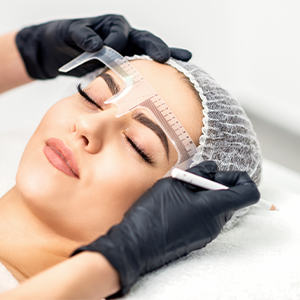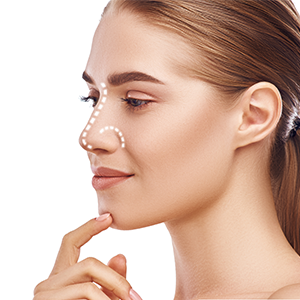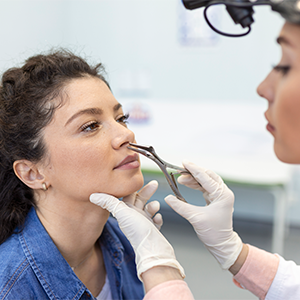Eyelid Lift
 Some creases on the eyelids brought on by lack of sleep, exhaustion, and aging may make a person look older than they actually are, but they can be treated surgically. Vision issues could be brought on by sagging and extra skin on the upper eyelid. These issues are eliminated and resolved by eyelid surgery. As with other surgical operations, bruises on the operation site may persist for around 5-7 days after the procedure. In approximately a month, all signs of surgery will be gone, and it will take around six months to fully recuperate.
Some creases on the eyelids brought on by lack of sleep, exhaustion, and aging may make a person look older than they actually are, but they can be treated surgically. Vision issues could be brought on by sagging and extra skin on the upper eyelid. These issues are eliminated and resolved by eyelid surgery. As with other surgical operations, bruises on the operation site may persist for around 5-7 days after the procedure. In approximately a month, all signs of surgery will be gone, and it will take around six months to fully recuperate.
Almond Eye Surgery
 Almond eye aesthetics involves gently pulling the eye upward to enlarge and accentuate the eyes. The incompleteness is the most significant aspect of this. Usually, it is made sure that the expression that was attempted to be created using cosmetics is permanent.
Almond eye aesthetics involves gently pulling the eye upward to enlarge and accentuate the eyes. The incompleteness is the most significant aspect of this. Usually, it is made sure that the expression that was attempted to be created using cosmetics is permanent.
Almond Eye Aesthetics is a procedure that completely addresses a person’s aesthetic impression. What matters most is whether your face and eye structure are attractive. Low eye structure people are especially preferred. You’ll be better able to make this decision after a thorough consultation with your doctor. Almond Eye Aesthetics views the lifting procedure’s reversibility as a further benefit.
Prior to the surgical operation Almond Eye Aesthetics, local anesthesia is administered. Following induction of anesthesia, an incision is created from the eye’s outer upper corner, and the eye is then raised using a specialized surgical thread. Onto the membrane of the bone, the raised tissue is anchored. There is a shape for the almond eye. Three to four stitches are used to complete the treatment, and they are removed without leaving any scars a week later. The procedure takes between 30 and 60 minutes. The patient does not require hospitalization.
The patient can speak clearly and carry on with his normal activities.
The attempt to continually cover the low eye image with makeup is eliminated by almond eye aesthetics. People without lower eyes are preferred because of the depth they provide a look. Almond Eye is another a cosmetic procedure that is rarely visible from the outside. People around you remark that you have a unique attractiveness, but it is unclear what it is. The low eye structure gives you a perpetually fatigued and drowsy look, but with this treatment, you develop a dynamic expression.
Eyebrow Lift
 Because of recurring eyebrow trend, the eyebrows, which actively contribute to facial beauty by highlighting the eyes, can take on numerous shapes. But the issue of the sulky eyebrows is brought together by fashion trends over time. The filling of the eyebrow with an eyebrow pen or an alternative eyebrow tattoo is caused by placing a line on the eyebrow, lining it thinly like a thread, and the damage caused to the hair roots.
Because of recurring eyebrow trend, the eyebrows, which actively contribute to facial beauty by highlighting the eyes, can take on numerous shapes. But the issue of the sulky eyebrows is brought together by fashion trends over time. The filling of the eyebrow with an eyebrow pen or an alternative eyebrow tattoo is caused by placing a line on the eyebrow, lining it thinly like a thread, and the damage caused to the hair roots.
The process of having your eyebrows “transplanted” involves moving the donor area’s healthy, existing hair roots to the eyebrow area. The eyebrows often reach their peak fertility approximately 7-8 months following the transfer, when they first begin to appear. Seven months following the brow transplant, you might be able to shape your brows again. We advise you to undergo the eyebrow operation after a specialist has carefully and skillfully shaped your eyebrows to be the most appropriate type for you.
With the help of the eyebrow transplantation procedure, you can thicken your sparse eyebrows, stop filling them up every morning, and get rid of any tattoos or strange eyebrow designs. If necessary, eyebrow transplantation can be done again. You can ensure that your eyebrows, which have become distinct as a result of sporadic examination or fashion, take on their original shape by moving in this way.
Facelift (Rhytidectomy)
 A facelift, or rhytidectomy, can be performed in a variety of ways, each of which is designed to address the demands and goals of the patient’s particular skin. Your surgeon will suggest a surgery that will address your specific difficulties after examining your skin and identifying your individual requirements. Through plastic surgery, thread lift surgery, or dermal filler injections, each facelift procedure seeks to “raise up” areas of the face and neck that are exhibiting unwelcome symptoms of aging.
A facelift, or rhytidectomy, can be performed in a variety of ways, each of which is designed to address the demands and goals of the patient’s particular skin. Your surgeon will suggest a surgery that will address your specific difficulties after examining your skin and identifying your individual requirements. Through plastic surgery, thread lift surgery, or dermal filler injections, each facelift procedure seeks to “raise up” areas of the face and neck that are exhibiting unwelcome symptoms of aging.
A facelift is a medical operation that gives your face and neck a revitalized and rejuvenated appearance. Age-related skin thinning causes more wrinkles and drooping, particularly around the eyes, along the jawline, and around the neck. Our once prominent and attractive high cheekbones become flat and aging as we lose cheek fat volume. Neuromodulators, injectable fillers, radiofrequency treatments, microneedling, laser skin resurfacing, threadlifting, and other non-surgical procedures are offered to rejuvenate the aging face. You might be a suitable candidate for a facelift when you’re ready to permanently restore the youthful contours of your cheekbones and minimize the drooping skin along your jawline and neck.
The majority of facelift procedures involve incisions that call for anaesthetic. Your facelift technique, as well as the specific practice preferences of your surgeon, will decide the type of anesthetic employed. General anesthesia may be required for some, more complex facelift procedures, although other, simpler procedures may be performed easily with intravenous or even local anesthetic. Your physician will go over the precise facelift procedure that would be best for you as well as the precise anaesthetic that would be most suitable. It might be beneficial to let your surgeon know during your appointment if going under anesthesia causes you any anxiety.
To guarantee the greatest results, be sure to strictly adhere to the before and after guidelines provided by your surgeon. All cosmetic procedures advise you to refrain from drinking or smoking, as well as to restrict your time in the sun and hard lifting. Additionally, they advise against taking any medications, especially those that thin the blood, like aspirin, as this will hinder your ability to heal.
Prior to surgery, you must also disclose to your surgeon any previous medical conditions, including herpes infections in the mouth. This will enable your surgeon to give you the best pre- and post-facelift treatment possible.
During your consultation, the precise needs for each kind of procedure are covered in depth. You’ll receive a list of important information about your facelift and recuperation from your plastic surgeon as well.
Neck Lift
 A neck lift is a component of the facelift procedure. Generally speaking, it is best to adjust everything at once. But occasionally, a neck lift or double chin repair may be necessary.
A neck lift is a component of the facelift procedure. Generally speaking, it is best to adjust everything at once. But occasionally, a neck lift or double chin repair may be necessary.
What circumstances a medical adjustment to the neck area was necessary;
- If the top face is healthy, the middle face is also healthy with only a little sagging, but the neck has a significant amount of extra skin.
- If we have a thick neck with structural fat even though we are slim, or if the neck is larger than the face,
- If you believe, “Even though I’m very thin, my neck doesn’t have an angle,”
- In these cases, we modify your lower face with a neck lift, submentoplasty, or both, depending on whether the neck is typically healthy but the double chin area is droopy and huge.
In this treatment, a little incision is made under the chin, and the muscles that surround the neck are stitched together to create a swan-like neck and a better angle on the neck. If the neck has additional skin and drooping, we approach from the scalp behind the ear, elevate the neck’s skin entirely, and remove the extra skin. If there is fat as well, liposuction can be combined with it.
This operation can be done using a variety of surgical methods. Although we always favor the method that allows our patients to heal quickly, yields positive outcomes, and reduces the risk of damaging the local veins and nerves, After surgery, the patient recovers within 7–10 days. Bruises might look different on every person. There might not even be any; there might only be minor bruises that would go away in 7–10 days. A ten-day period of edema is typical. 8–10 years are required for surgery to take effect. It can be carried either independently or in conjunction with a face lift.
Nose Aesthetic (Rhinoplasty)
 Cosmetic nose surgeries are 2 to 3 hour long procedures done under general anaesthetic. It is possible to combine closed and open approaches. It is a difficult process that makes use of engineering, architecture, tissue science, and wound healing. With knowledge and experience today, the outcomes can be forecasted. Since the bone and cartilage tissue of the nose are operated on independently during rhinoplasty procedures, the desired outcome is decided upon jointly before to the procedure, and we end up with a nose structure that is reasonably near to the patient’s request.
Cosmetic nose surgeries are 2 to 3 hour long procedures done under general anaesthetic. It is possible to combine closed and open approaches. It is a difficult process that makes use of engineering, architecture, tissue science, and wound healing. With knowledge and experience today, the outcomes can be forecasted. Since the bone and cartilage tissue of the nose are operated on independently during rhinoplasty procedures, the desired outcome is decided upon jointly before to the procedure, and we end up with a nose structure that is reasonably near to the patient’s request.
Both aesthetic and utilitarian qualities are present in these techniques. Corrections can be done concurrently with any breathing issues the patient may be experiencing. Interventions to the cartilage, bone, and middle structure of the nose are used to treat curved surfaces and abnormalities. After the procedure, we apply a buffer to the nasal area, which will stay there for two to three days. These tampons won’t prevent you from breathing. They are unique silicone tampons and goods that do not hurt when removed, and a unique thermoplastic plaster is applied to the nose and left there for a whole week. This plaster helps form the nose while also shielding it from damage from the outside world.
Septoplasty
 Surgery to straighten the bone and cartilage that divide the area between your two nostrils is known as a septoplasty (SEP-toe-plas-tee) (septum). A deviated septum is one in which the septum is crooked. Due to inadequate drainage, a deviated septum can make it more difficult to breathe through your nose and increase your risk of developing sinus infections.
Surgery to straighten the bone and cartilage that divide the area between your two nostrils is known as a septoplasty (SEP-toe-plas-tee) (septum). A deviated septum is one in which the septum is crooked. Due to inadequate drainage, a deviated septum can make it more difficult to breathe through your nose and increase your risk of developing sinus infections.
Your nasal septum is moved to the middle of your nose during a septoplasty. Your surgeon may need to cut and remove a portion of your nasal septum in order to properly reposition it.
You’ll probably discover that breathing is easier once a septoplasty heals.
Lip Lift
 A surgical technique called a lip lift tries to shorten the gap between the vermilion border and the columella (base of the nose) (red upper lip line). Despite the fact that it can be congenitally lengthy even in young people, this distance tends to grow longer with age.
A surgical technique called a lip lift tries to shorten the gap between the vermilion border and the columella (base of the nose) (red upper lip line). Despite the fact that it can be congenitally lengthy even in young people, this distance tends to grow longer with age.
In addition to improving the overall aesthetics of the face, lowering the philtrum (the height of the top lip vertically) can produce a more harmonious ratio in the anatomical region between the base of the nose and the chin.
A subnasal lip lift is often recommended for patients with a lengthy philtrum (more than 15 mm), with the goal of reducing its height by around one-third. However, these parameters may differ from person to person, making a complete clinical evaluation crucial. The amount of lift required will depend on the patient’s desired look, as well as the patient’s unique face features and measurements.
Patients with a lengthy philtrum who had their lips filled in the past might have suffered “duck lips,” a condition where the lip protrudes forward instead of causing more redness to appear. A subnasal lip lift can provide those patients’ top lips a poutier, more natural appearance. A surgical lip lift can revitalize the lower face and improve facial appearances by permanently enhancing the vermillion show and teeth display.
Patients who exhibit facial aging symptoms may potentially gain from Lip Lift surgery. The changes that directly affect the mouth and lip as we age include:
- Loss of volume in the upper lip due to soft tissue descent.
- The cupid’s bow and philtral columns are less defined along the vermillion border, which has been thinned.
- Bony resorption, which reduces the prominence of the lip
- The upper Lip complex, which seems deflated, vertically lengthens.
- Rhytides perioral (smokers or lipstick lines)
